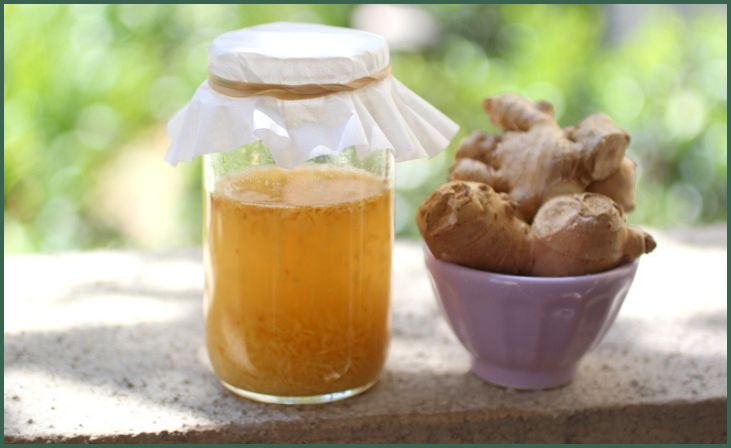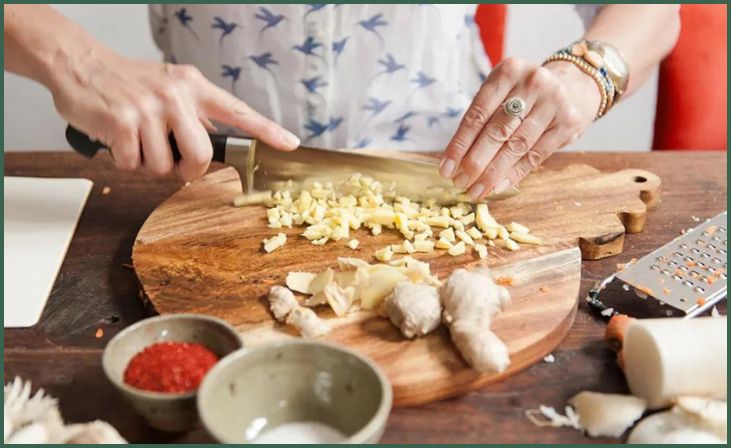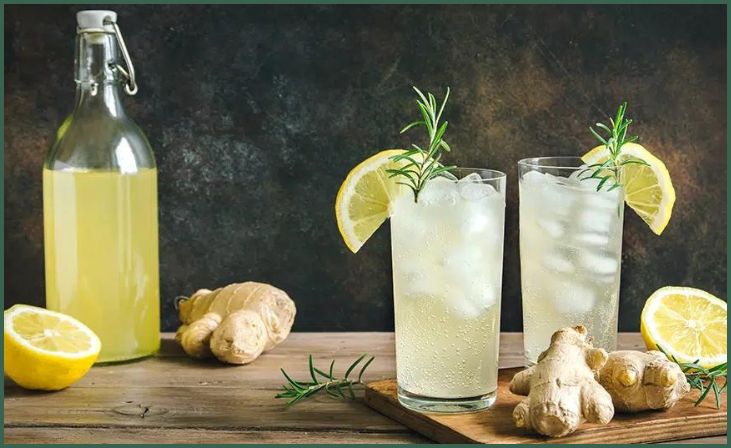Are you seeking a way to elevate the flavors of your homemade beverages? Dive into the world of crafting your own ginger bug, a delightful natural ferment that infuses a tangy punch into your drinks.
This simple yet captivating process not only imbues your beverages with a tantalizing fizz but also introduces a myriad of health benefits, courtesy of its probiotic richness. Delve into the step-by-step journey of creating this effervescent concoction, and open the doors to a universe of endless, vibrant taste possibilities that will leave your taste buds yearning for more.
What is a Ginger Bug?

Before learning How to Make Ginger Bug you must understand what a Ginger bug is. A ginger bug is a natural starter culture used in the process of fermenting beverages, particularly known for its role in producing homemade sodas and probiotic-rich drinks. It is essentially a combination of fresh ginger, sugar, and water that serves as a base for the fermentation process.
Over the course of several days, the ginger bug develops a natural effervescence and tangy flavor, which can be used to add depth and complexity to a variety of homemade beverages. It acts as a living culture, fostering the growth of beneficial bacteria and yeast that contribute to the fermentation process, resulting in a fizzy and tangy end product.
Also Read: 10 Ways to Use Extra SCOBYs
How to Make Ginger Bug?
Here is a step-by-step guide to making a ginger bug:
- Gather the Ingredients:
- Fresh ginger root
- Organic cane sugar or other natural sugars
- Non-chlorinated water
- Prepare the Jar:
- Clean a glass jar with hot, soapy water, and rinse thoroughly.
- Ensure the jar is completely dry before use to prevent contamination.
- Grate the Ginger:
- It is often linked to metabolic syndrome, being overweight, and insulin resistance.
- Place the grated ginger in the prepared glass jar.
- Add Sugar and Water:
- Add 2 tablespoons of organic cane sugar to the grated ginger.
- Pour 2 cups of non-chlorinated water into the jar.
- Mix well to dissolve the sugar.
- Cover and Set Aside:
- Cover the jar with a clean cloth or paper towel secured with a rubber band.
- Place the jar in a warm, dark spot, ideally with a consistent temperature of around 70-85°F (21-29°C).
- Stir Daily:
- Stir the mixture with a clean spoon once a day for the next 5 to 7 days.
- This promotes the circulation of yeast and beneficial bacteria, aiding in the fermentation process.
- Look for Signs of Fermentation:
- Bubbling and fizzing are indications that the fermentation process is taking place.
- A pleasant, slightly sour aroma is another sign of successful fermentation.
- Maintain and Feed the Ginger Bug:
- After the initial fermentation, “feed” the ginger bug by adding 1 tablespoon of grated ginger and 1 tablespoon of sugar every day or every other day, depending on the level of activity.
- Continue feeding and maintaining the ginger bug for as long as you intend to use it for fermentation.
Following these steps will help you create a potent and lively ginger bug that can be used as a natural starter culture for various homemade fermented beverages.
Don't just scroll, subscribe!
BuzzTrail's unique web-stories are the cure for boredom you've been waiting for.
Also Read: Kefir Helps Non-Alcoholic Fatty Liver Disease
5 Health Benefits of Ginger Bug

Here are five health benefits of the ginger bug that you must know after learning how to make Ginger bug:
- Probiotic Boost: Ginger bug is rich in beneficial bacteria and yeast, which can promote a healthy balance of gut flora, aiding in digestion and supporting overall gut health.
- Enhanced Nutrient Absorption: The probiotics present in ginger bug can improve nutrient absorption in the digestive system, allowing the body to effectively utilize the vitamins and minerals from the foods consumed.
- Immune System Support: Consuming ginger bug can help strengthen the immune system due to its probiotic content, potentially reducing the risk of infections and supporting the body’s natural defense mechanisms.
- Anti-Inflammatory Properties: Ginger, a key ingredient in ginger bug, possesses anti-inflammatory properties that can help alleviate symptoms of inflammation and reduce the risk of chronic inflammatory conditions.
- Digestive Aid: Ginger bug’s natural fermentation process produces enzymes that can aid in digestion, potentially reducing symptoms of indigestion, bloating, and other gastrointestinal discomforts. Its soothing properties may also help alleviate nausea and improve overall digestive function.
5 Tips for Storage and Maintenance of Ginger Bug

Here are five tips for the storage and maintenance of ginger bug:
- Proper Container: Store your ginger bug in a glass jar with a tight-sealing lid to prevent contamination and maintain a consistent environment for fermentation. Avoid using metal or plastic containers, as they can potentially react with the acidic nature of the ferment, compromising its quality.
- Regular Feeding: Maintain the vitality of your ginger bug by regularly feeding it with fresh ginger and sugar as needed, ensuring that the culture remains active and robust. Consistent feeding will help sustain the fermentation process and prevent the ginger bug from becoming dormant or losing its potency.
- Temperature Control: Store the ginger bug in a location with a stable temperature, ideally between 70-85°F (21-29°C), as fluctuations in temperature can impact the fermentation process. Avoid exposing the ginger bug to extreme heat or cold, as this can disrupt its activity and affect its overall health.
- Airflow Management: While it is essential to cover the ginger bug with a breathable cloth or paper towel, ensure that it is secure enough to prevent any foreign particles from entering the jar. Strike a balance between allowing airflow for the fermentation process and safeguarding the ginger bug from potential contaminants present in the surrounding environment.
- Routine Maintenance: Regularly inspect the ginger bug for any signs of mold, unusual odors, or discoloration. If you notice any abnormalities, take immediate action by adjusting the feeding schedule, temperature, or cleanliness of the storage container. Prompt maintenance will help preserve the quality and potency of the ginger bug, ensuring its effectiveness for future fermentation projects.
Also Read: How to Make Kombucha
Conclusion
Embark on an exciting and fulfilling journey of delving into the art of homemade fermentation, allowing you to infuse your favorite drinks with the wholesome essence of a ginger bug. By incorporating this natural ferment into your beverage-making repertoire, you have the opportunity to unleash a wave of diverse flavors that will not only excite your palate but also contribute to your overall well-being.
With every bubbling concoction and tangy sip, you have the chance to experiment, innovate, and craft a spectrum of refreshing, health-conscious beverages that are bound to captivate your taste buds and invigorate your senses. Let your creativity flourish as you delve into the intricacies of mastering the craft of ginger bug creation, ultimately propelling your beverage game to unprecedented heights of excellence and flavor.
FAQs
How long does it take to make a ginger bug?
How long does it take to make a ginger bug?
Typically, it takes around 5 to 7 days to create a ginger bug. However, the duration may vary based on factors such as temperature and the desired level of fermentation. Keep an eye on the bubbling activity and taste to ensure the desired flavor and fizziness are achieved.
Can I use the ginger bug for beverages other than sodas?
Can I use the ginger bug for beverages other than sodas?
Yes, the versatile nature of ginger bug allows it to be used in a variety of homemade beverages, including herbal teas, fruit-based drinks, and even certain alcoholic concoctions. Experiment with different ingredients and flavors to create a diverse range of refreshing and probiotic-rich beverages.

